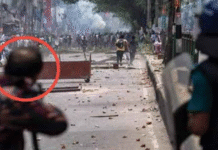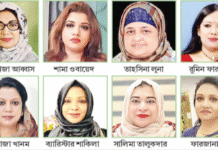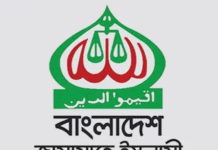Prothom Alo
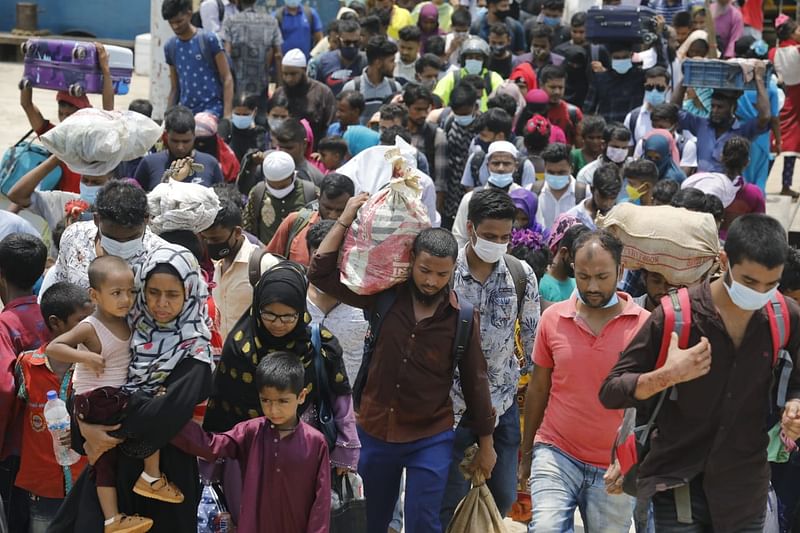
Since Eid-ul Fitr, there has been a resurgence in the rate of coronavirus transmission in the country. The spread of the virus is comparatively higher in the districts bordering India. These figures appeared in a report of the World Health Organization (WHO) on the Covid situation in the country.
WHO published the report on Wednesday on the basis of the country’s Covid-related data from 17 to 23 May.
According to the report, the increase in number of newly identified coronavirus patients was 100 per cent or more as compared to the previous week (10 to 16 May) in 22 districts. Among them 15 are border-lying districts. In nine of these districts the number of identified Covid patients is below 50. Although the number is low, the experts are concerned with the increase of newly identified Covid patients by 100 per cent within a week.
Many people had left Dhaka for their villages for Eid. Public gatherings were also high as compared to the past. The experts are considering it as a probable reason behind the upward trend of coronavirus transmission. They had warned about this even before Eid. The Directorate General of Health Services (DGHS) cannot confirm whether this resurgence is due to the Indian variant of coronavirus or not as yet.

However, the Indian variant has already been detected in the country. After Eid, the coronavirus transmission rate has been higher in the border-lying districts. Many of the newly identified patients have recently visited India.
The civil surgeon office of Brahmanbaria district confirmed 13 coronavirus cases among the India returnees on Wednesday alone. These coronavirus patients are currently undergoing treatment in institutional quarantine in Brahmanbaria. With this, the number of coronavirus patients among the India returnees, who entered the country through the Akhaura border, rose to 23.
The country declared its first coronavirus case on 8 March last year. The second wave of the pandemic hit the country in March this year. On 5 May, the government imposed several restrictions on different sectors, including the movement of public transport, to curb the transmission rate.
Although eased down, those restrictions are still in effect. Due to these restrictions, the transmission rate started to decline by mid-April. On 29 April, the detection rate was below 10 per cent as compared to the number of tests. However, for 11 days, an upward trend of coronavirus transmission rate has been observed.
Districts with higher transmission rate
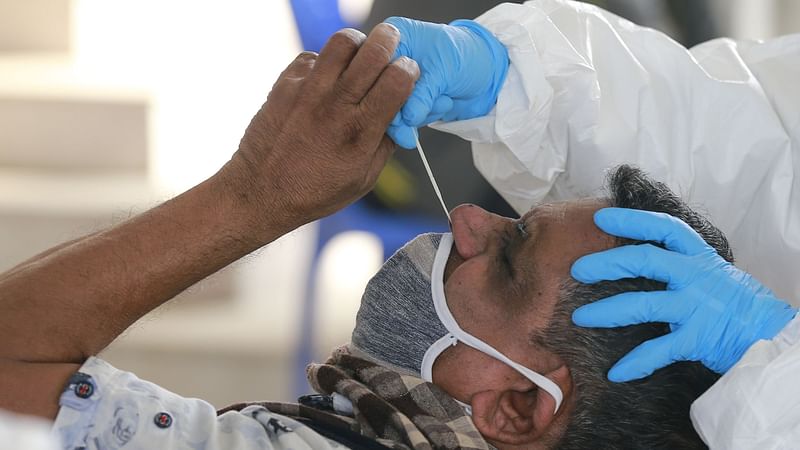
According to WHO, between 17 and 23 May, the increase of coronavirus cases was 100 per cent or more as compared to the previous week in 22 districts of the country. Among them, 15 are districts bordering India. These districts are – Chapainawabganj, Thakurgaon, Lalmonirhat, Kurigram, Joypurhat, Rajshahi, Meherpur, Kushtia, Jashore, Satkhira, Habiganj, Jamalpur, Rangamati and Bandarban. The other districts among those 22 are – Natore, Gaibandha, Khulna, Pirojpur, Jhalakathi, Cox’s Bazar and Narsingdi.
The seven border districts where the number of newly identified coronavirus patients was between 101 to 500 in that week (17 to 23 May) are – Chapainawabganj, Dinajpur, Rajshahi, Jashore, Cumilla, Mymensingh and Sylhet. Apart from these, Dhaka, Chattogram, Cox’s Bazar, Khulna, Noakhali and Gazipur are also in this list.
Nazmul Islam, spokesperson of the DGHS, said in the coronavirus related bulletin on Wednesday that an all-out lockdown has been declared in Chapainawabganj. DGHS is closely monitoring the border districts too. The decision for lockdown in the other border districts would depend on the situation. A survey is being conducted and data is being collected. Considering the situation, the government will readily take any decision to ensure public health safety.
Due to the surge in coronavirus infections, a week-long all-out lockdown has been in effect in Chapainawabganj since last Monday. Despite that, many people from the district are going to Dhaka and Rajshahi. A total of 179 people were diagnosed with coronavirus in the district between 17 to 23 May. The number was 73 in the previous week.
Sabera Gulnahar, head of the virology department at Rajshahi Medical College, said on Tuesday that the detection rate was 62 per cent in comparison to the total number of tests in Chapainawabganj and 28 per cent in Rajshahi.
According to the civil surgeon office of Lalmonirhat, some 10 coronavirus patients were identified in the district in the last two weeks. Among them, eight had visited India in recent times. Samples of three among them have been collected and sent to the Institute of Epidemiology, Disease Control and Research (IEDCR) for genome sequencing. But the report from the IEDCR is yet to be released.
In Khulna, 339 people were diagnosed with coronavirus last week. The number was 154 in the previous week. Among the newly identified coronavirus patients, 19 people visited India.
However, Niaz Mohammed, civil surgeon of Khulna, thinks that the coronavirus transmission rate is on the rise in the district due to people’s reluctance in abiding by the health guidelines.
A total of four people were diagnosed with coronavirus in between 10 and 16 May in Sunamganj. The number increased to 19 by the next week. However, civil surgeon Md Shams Uddin says the transmission rate is low in the district as compared to the previous statistics. The number of tests has decreased as well.
The coronavirus transmission rate has been on the rise in Kushtia since 18 May. The detection rate is 14 to 16 per cent there. Kushtia’s civil surgeon HM Anwarul Islam said a number of people had to the district from Dhaka during Eid. This might cause the resurgence in the transmission rate in the district, he added.
As many as 145 India returnees are now in quarantine in Kushtia. All of them had the coronavirus negative certificates issued by India while crossing the border. However, three of them tested positive for coronavirus.
Before Eid, the coronavirus detection rate in Satkhira was 13 per cent as compared to the total number of tests. However, since last Monday, the detection rate has been over 40 per cent.
The country’s overall detection rate is about 10 per cent
There has been a resurgence in coronavirus transmission rate in the country since Eid-ul Fitr. According to a statement from the DGHS on Wednesday, the coronavirus detection rate was 9.11 per cent in 24 hours (Tuesday to Wednesday). The rate was 10 per cent a day earlier.
The statement said, as many as 1,497 more cases were reported after testing 16,434 samples including rapid antigen tests. It also stated that another 17 people died of coronavirus. With this, the number of total deaths in the country rose to 12,458.
The number of detected novel coronavirus cases in Bangladesh, according to the government, on Wednesday rose to 793,693.
The health directorate on Wednesday said as many as 1,056 people recovered from the highly infectious disease in the last 24 hours, taking the number of the total recovery to 733,866.
Speaking to Prothom Alo, Mushtuq Husain, advisor of IEDCR, said the rise in the transmission rate was expected due to the Eid-centric movement and shopping. However, an upward tendency in the coronavirus transmission rate has been observed since Eid. As the detection rate grows in the border districts, it is increasing in other districts too. It is being estimated that the Indian variant and public gatherings on the occasion of Eid, both are playing a role in the resurgence of coronavirus transmission. Speedy and effective measures must be taken wherever the transmission rate is on the rise. Otherwise, there would be a risk of an unexpected increase in the transmission rate like last March.
*Staff correspondents of Rajshahi, Satkhira and Kushtia and correspondents from Chapainawabganj, Lalmonirhat, Khulna and Sunamganj have helped in making this report.
*This report, originally published in the print and online edition or Prothom Alo, has been rewritten for English edition by Ashish Basu


